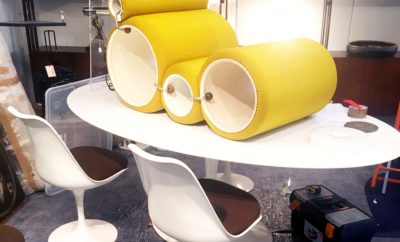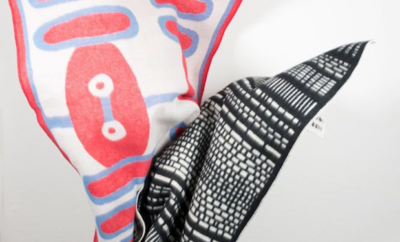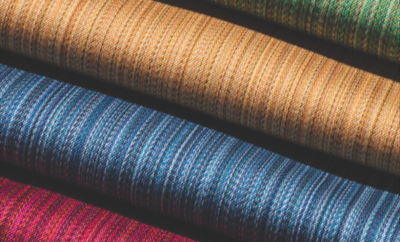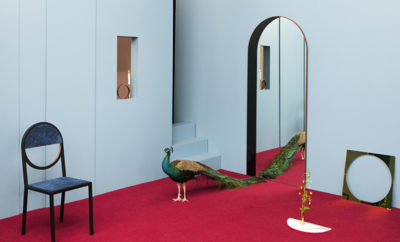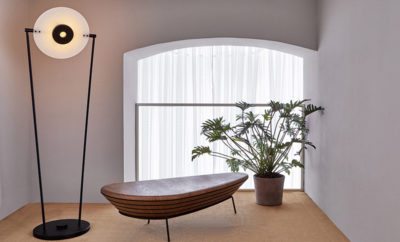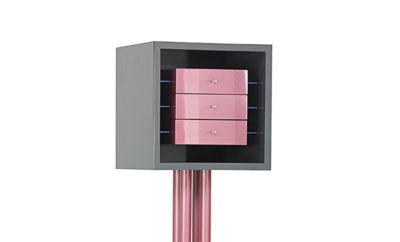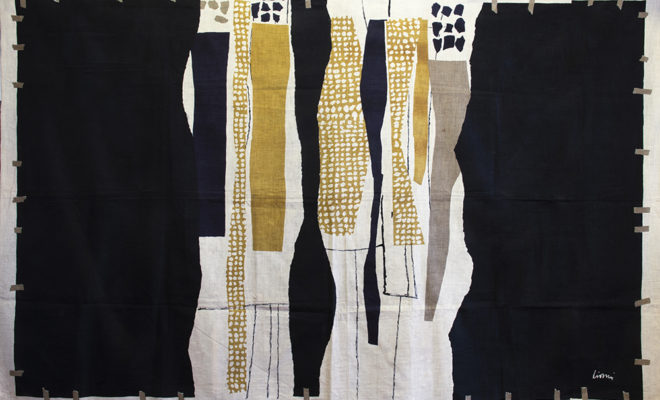 Panel, Il carretto delle stoffe [The Fabrics Cart] by Leo Lionni, 1961. Except as noted, MITA Archive of M.A. Ponis, on loan to Wolfsoniana–Palazzo Ducale Fondazione per la Cultura, Genoa.
Panel, Il carretto delle stoffe [The Fabrics Cart] by Leo Lionni, 1961. Except as noted, MITA Archive of M.A. Ponis, on loan to Wolfsoniana–Palazzo Ducale Fondazione per la Cultura, Genoa.
Exhibition
Modern Italian Textiles at the Wolfsonian-FIU in Miami
While Italy is widely celebrated for its modern furniture, decorative objects, and fashion, its textiles are lesser known. A new exhibition at the Wolfsonian-Florida International University in Miami Beach should help to redress the balance. Made in Italy: MITA Textile design 1926–1976, organized in cooperation with the museum’s Genoa-based sister institution, the Wolfsoniana, traces the five-decade history of a firm whose textile production was a unique reflection of developments in Italian modern art, from futurism to abstract expressionism.
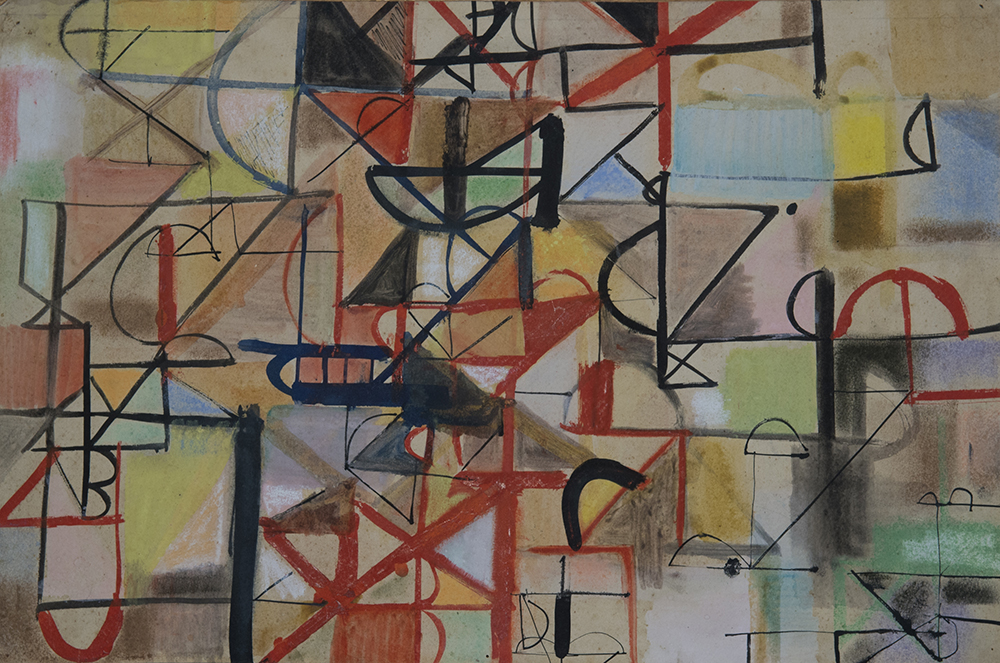
Design drawing for a rug by Ettore Sottsass, 1947, for MITA’s Rug Competition for the T8. VIII Triennale, Milan.
In the exhibition, off-white walls are hung with rugs, printed fabrics, tapestries, limited-edition art panels, and scarves , while display cabinets hold original drawings and photographs—all drawn from the archival holdings of the Wolfsoniana, where the show originated. For the current iteration, curator Silvia Barisione has added material from the Wolfsonian collection— including posters, ceramics, and cruise-ship brochures—to provide context and connections for an American audience unfamiliar with many of the artists.
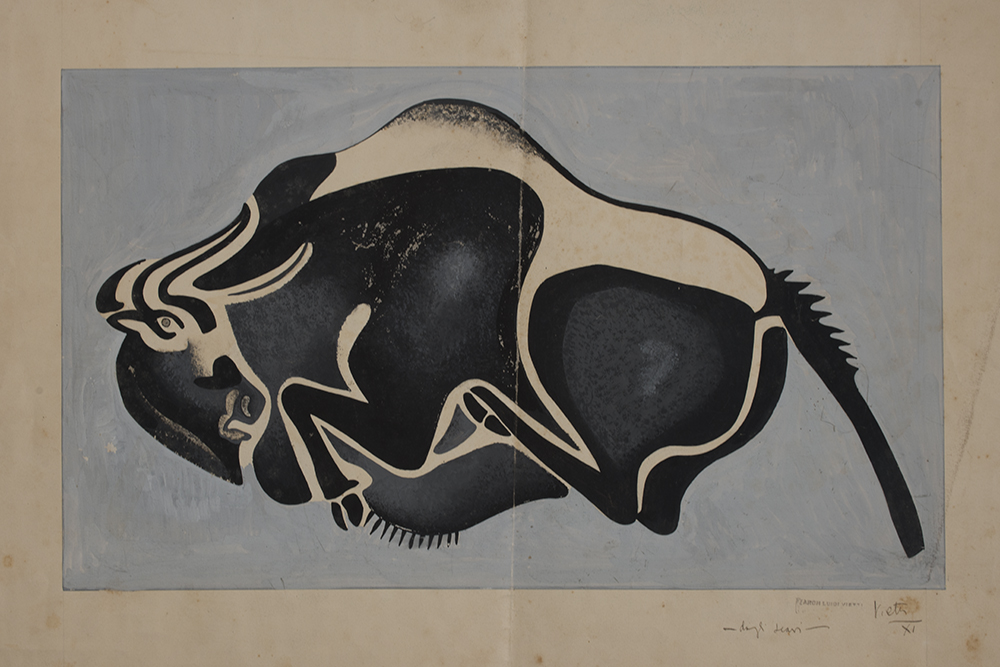
Design drawing for a rug, Dagli scavi [From the Excavations] by Luigi Vietti, 1933.
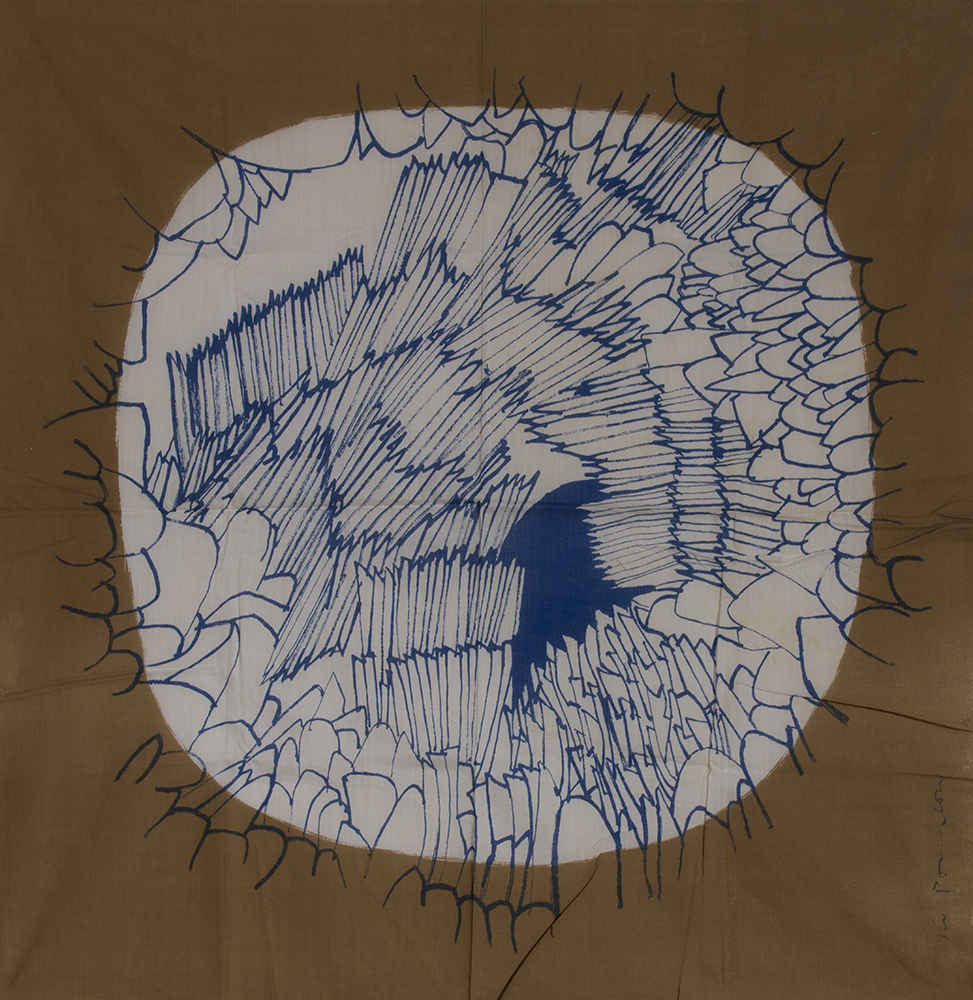
Scarf, Stromboli by Gio Pomodoro, 1959. Private Collection.
As he expanded the business and added to MITA’s roster of designers, Ponis navigated the delicate climate of Mussolini-era Italy. He built a modern factory in Nervi, a Genoa suburb, which was converted to military production during World War II. After the war, MITA expanded its offerings to tapestries, fabrics, and other textile products designed by the most innovative Italian artists of the time, in both abstract and figurative motifs, that found a willing clientele for both residential and commercial projects. The firm participated in Italy at Work: Her Renaissance in Design Today, the exhibition that first brought Italian modern design to the attention of the United States, touring twelve museums from 1950 to 1953.
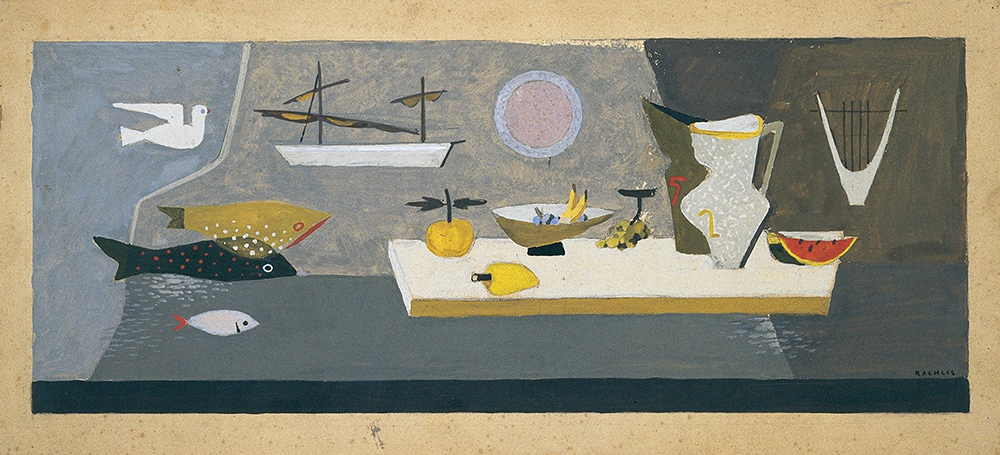
Design drawing for the tapestry in the Andrea Doria First Class Reading Room by Michael Rachlis, c. 1952.
With the postwar rise of transatlantic travel, ocean liners became major clients of the company, commissioning tapestries, curtains, and furnishings for ships such as the ill-fated Andrea Doria, which sank after a collision in 1956. That market declined with the advent of air travel, Ponis died in 1970, and the MITA closed in 1976. Happily, the company’s archives were preserved and, on long-term loan to the Wolfsoniana, provide an informative view of the development of modernism in Italy.
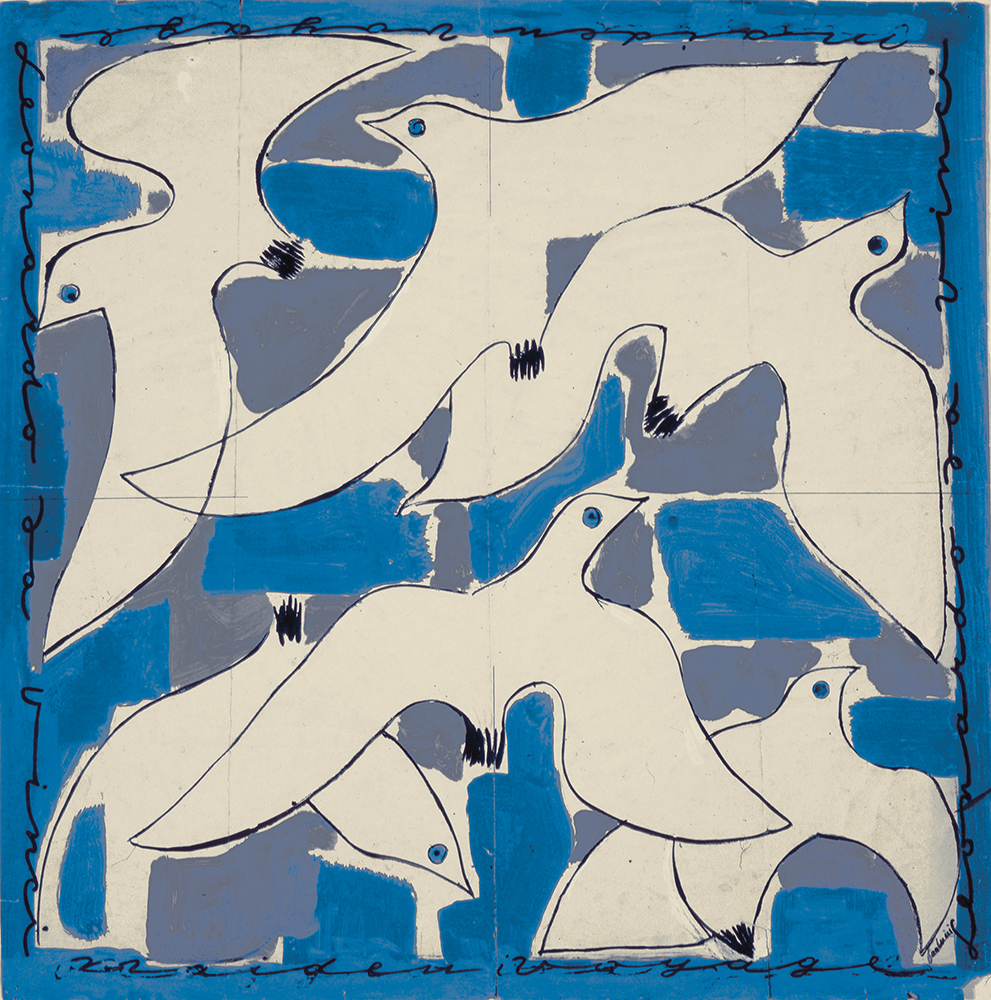
Design drawing for a scarf, Gabbiani [Seagulls], for the Leonardo da Vinci Liner by Enrico Paulucci, 1960.


